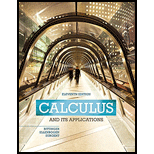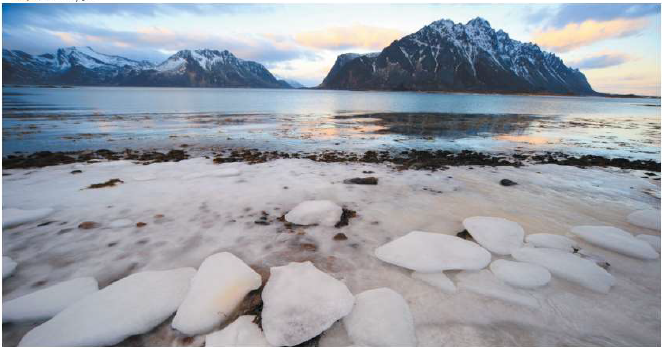
Rate of change of the Arctic ice cap. In a trend that scientists attribute, at least in part, to global warming, the floating cap of sea ice on the Arctic Ocean has been shrinking since 1980. The ice cap always shrinks in summer and grows in winter. Average minimum size of the ice cap, in square miles, can be approximated by
In 2013, the radius of the ice cap was approximately 792 mi and was shrinking at a rate of approximately 4.7 mi/yr. (Source: Based on data from nsidc.org.) How fast was the area changing at that time?

Want to see the full answer?
Check out a sample textbook solution
Chapter 2 Solutions
Calculus and Its Applications Plus MyLab Math with Pearson eText -- Access Card Package (11th Edition) (Bittinger, Ellenbogen & Surgent, The Calculus and Its Applications Series)
Additional Math Textbook Solutions
University Calculus: Early Transcendentals (4th Edition)
Intro Stats, Books a la Carte Edition (5th Edition)
Elementary Statistics
Elementary Statistics (13th Edition)
A First Course in Probability (10th Edition)
A Problem Solving Approach To Mathematics For Elementary School Teachers (13th Edition)
- can you solve this question using partial fraction decomposition and explain the steps used along the wayarrow_forwardIntegral How 80*1037 IW 1012 S е ऍ dw answer=0 How 70+10 A 80*1037 Ln (Iwl+1) du answer=123.6K 70*1637arrow_forwardcan you solve this question and explain the steps used along the wayarrow_forward
- can you solve this question and explain the steps used along the wayarrow_forwardcan you solve this question and explain the steps used along the wayarrow_forwardCan the expert solve an Intestal In detall? 110x/0³ W. 1 SW = dw A 40x103π ⑤M-1 大 80*10³/ 12 10% 70*1037 80x103 || dw OP= # Sin (w/+1) dw A 70*10*Aarrow_forward
- Algebra & Trigonometry with Analytic GeometryAlgebraISBN:9781133382119Author:SwokowskiPublisher:Cengage
 Functions and Change: A Modeling Approach to Coll...AlgebraISBN:9781337111348Author:Bruce Crauder, Benny Evans, Alan NoellPublisher:Cengage Learning
Functions and Change: A Modeling Approach to Coll...AlgebraISBN:9781337111348Author:Bruce Crauder, Benny Evans, Alan NoellPublisher:Cengage Learning Glencoe Algebra 1, Student Edition, 9780079039897...AlgebraISBN:9780079039897Author:CarterPublisher:McGraw Hill
Glencoe Algebra 1, Student Edition, 9780079039897...AlgebraISBN:9780079039897Author:CarterPublisher:McGraw Hill 
 Trigonometry (MindTap Course List)TrigonometryISBN:9781337278461Author:Ron LarsonPublisher:Cengage Learning
Trigonometry (MindTap Course List)TrigonometryISBN:9781337278461Author:Ron LarsonPublisher:Cengage Learning College Algebra (MindTap Course List)AlgebraISBN:9781305652231Author:R. David Gustafson, Jeff HughesPublisher:Cengage Learning
College Algebra (MindTap Course List)AlgebraISBN:9781305652231Author:R. David Gustafson, Jeff HughesPublisher:Cengage Learning





